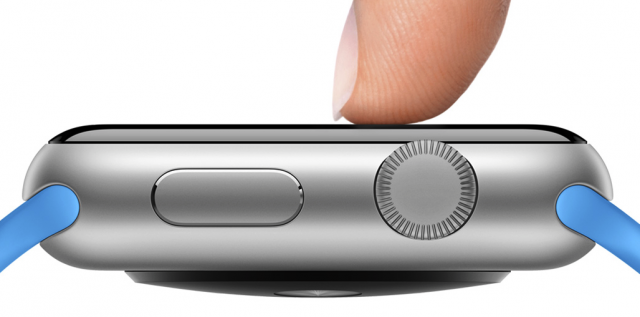Now, just hours away from the the world’s best selling Smartphone next gen product launch, (Sept 9) rumors of a new 3D Touch Display are dominating the news for the newest iPhone (6S and 6S Plus ?)

Apple’s Latest Press Invite to the new iPhone product launch now just hours away, where the company will announce its new 3D Touch Display interface for the world’s most popular Smartphone. Source: The Telegraph It’s really a “force touch” system originally introduced by Apple on its wearable Watch display and the track pad on newer Macbook laptops. On the trackpad, it can sense the level of pressure users apply with connectivity to the “taptic engine” that offers a haptic feedback (click) sensation when engaging the surface of the trackpad. The technology is intended to offer subtle (and intuitive) differences in user interface, with the potential to “perform a variety of different actions in different apps, all on the same surface,” according to Apple force touch literature found on the web.
So traditional touch gestures like scrolling, swiping, pinching and rotating continue to be supported, along with “a new dimension” of “customizable” sensitivity (pressure adjustment) and discernment based on finger or thumb input, according to Apple. For example a click – hold (click and continue to press) will result in looking up a definition of a word, previewing a video or image file, depending on the current app and type of object being targeted.
These “contextually specific” controls add to the intuitive experience on the Apple Watch as well. Its Force Touch technology “…uses tiny electrodes around the flexible retina display to distinguish between light tap and deep press,” the company writes in its Apple Watch literature. A firm press on the Apple Watch screen displays application specific controls (in Messages, Music and Calendar for example) and in the home screen, allows users to select a different face on the watch.
Apple calls its 3D Touch Display offering contextually specific controls “the most significant new sensing capability since Multi-Touch,” and we while a bit overstated, they may be right. Remember, the company has been working on this new interface for some time now, and we have already seen hints of the functionality in existing (2D) products like messaging. Think of tapping on a cell phone number or date to launch the phone or calendar app.) But 3D Touch offers the potential for an exponential increase in usability, and a good litmus test will be just how many of these robust features made it to the latest iPhone launch. More important in the longer term will be how the app developers will integrate cool new feature into their existing mobile applications. Whole new use models may be born, hopefully with some surprising results.
 The Apple Watch already features a 3D touch interface with different levels of pressure sensitivity offering “contextual specific” controls, (see the hint? look again at the first image…) Source: Apple
The Apple Watch already features a 3D touch interface with different levels of pressure sensitivity offering “contextual specific” controls, (see the hint? look again at the first image…) Source: Apple
So the age of sensors is keeping pace in the form of Apple’s new 3D touch display on its newest iPhone 6S and 6S Plus (or 7 and 7 Plus?) And the wait is now just a matter of hours, as the countdown for the world’s most coveted smartphone continues and the lines of fan-boys and girls that must-have the newest and best from Apple, begins to swell outside its stores worldwide. – Steve Sechrist

